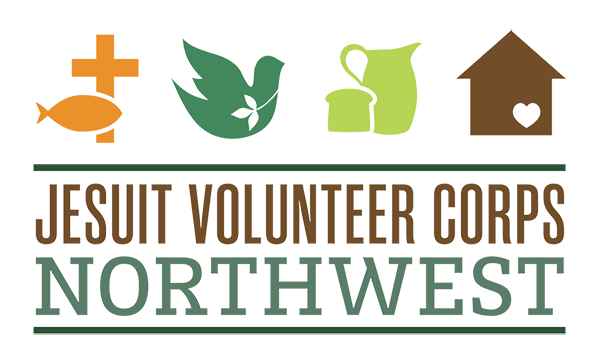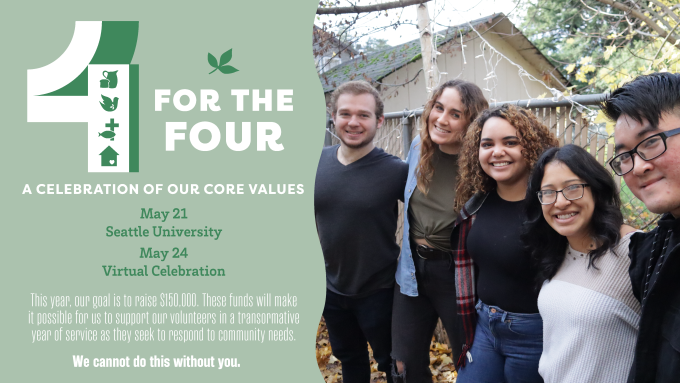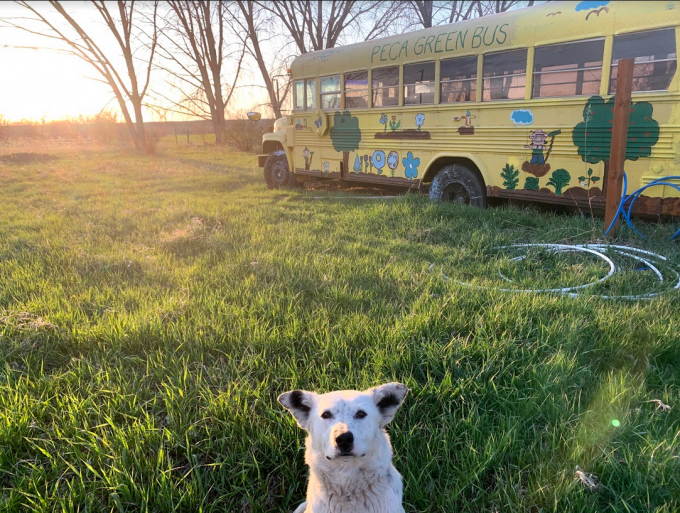
Nestled in the tall grasses behind the JV house, an abandoned school bus has been turned into a home for budding plants. Since Pretty Eagle Catholic Academy (PECA) moved to distance learning due to COVID-19, my role at my service site has evolved from teacher support to gardener-in-training. I began my service year at PECA serving alongside 120 of the greatest kids in the world. My days were filled with laughter and joy as I assisted in the classroom, ate meals in the lunchroom, and played tag at recess.
On March 16, my service site switched to distance learning for the rest of the school year due to the pandemic. Distance learning has been an obstacle for PECA. Although this teaching style is necessary during a pandemic, it is inequitable because it fails to take into consideration students of diverse backgrounds, especially students of color and low-income students. For example, some of PECA’s students do not have access to Wi-Fi due to high costs and how remote some parts of the reservation are. As a result, my community mates and I have been serving through alternative projects, including putting together homework packets, dropping off and picking up homework, preparing weekend meal bags for food insecure students, and restarting the greenhouse bus.
The greenhouse bus was started by a former teacher at PECA a couple years ago. It was a project to teach students about planting and growing their own food. Unlike a typical yellow school bus, the greenhouse bus is painted green, features three sky light windows, and has plants growing inside it. Until recently, the bus had been collecting dust behind our trailer. It was the kindergarten teacher’s idea to bring the bus back to life. Alfretta, the kindergarten teacher, plans to use the bus and the plants inside it to teach her students about nature and gardening next fall.
In April, my community mates, Jackie and Jaylieen, and I spent our days hosing down the bus, sweeping and mopping the inside, and collecting planting containers. One way we are trying to be sustainable is by planting the plants in recycled containers, like cans, milk jugs, and egg cartons. Recently, we planted our first seeds, which included tomatoes, radishes, cucumbers, spinach and various herbs. Our mornings are filled with excitement as we find new plants that have sprouted. We hope to distribute any food we grow to community members who need it.
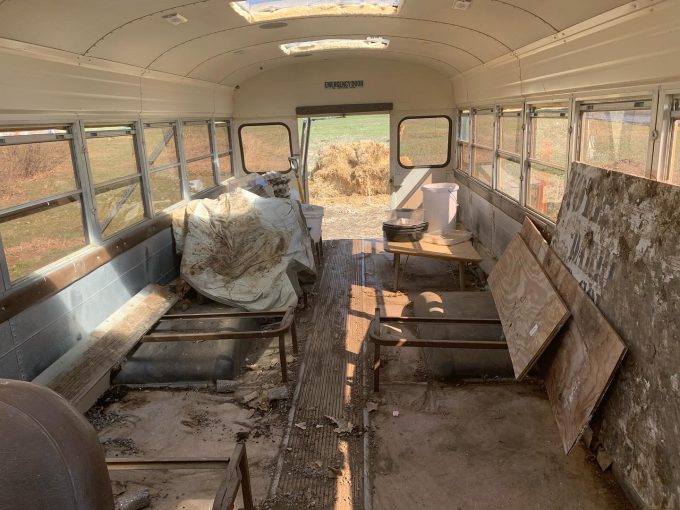
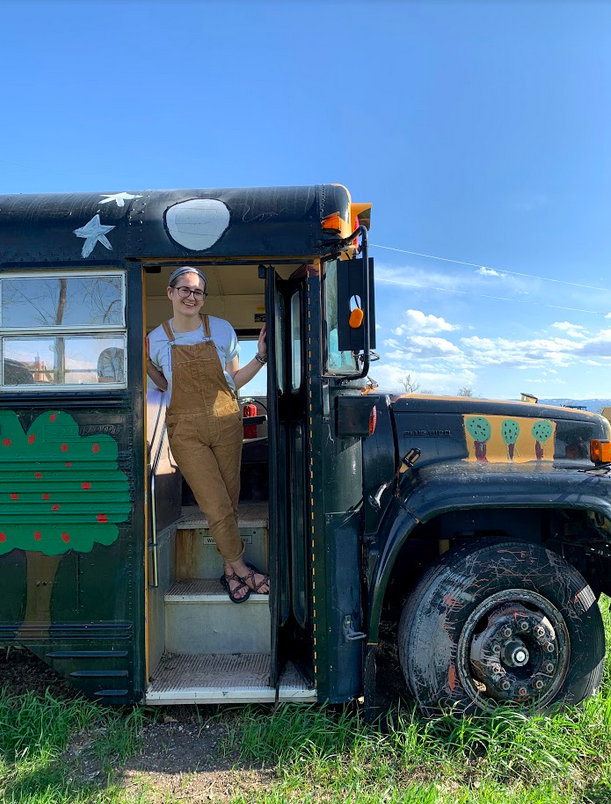
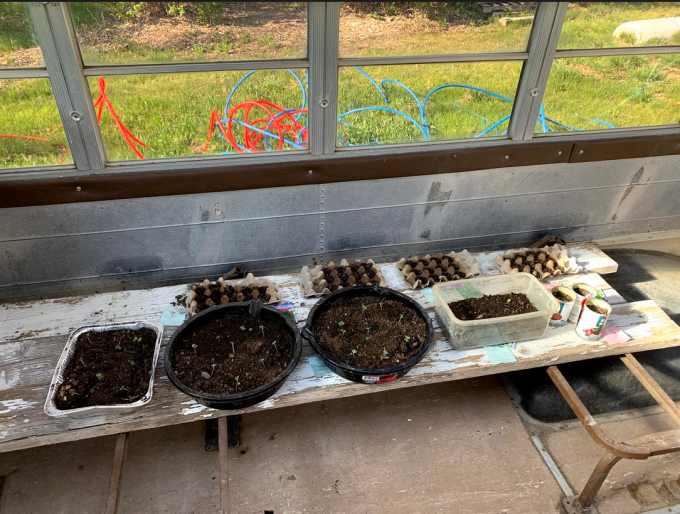
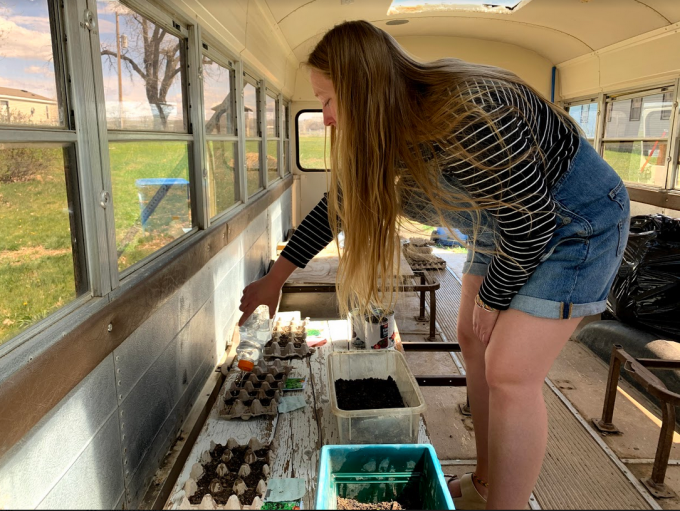
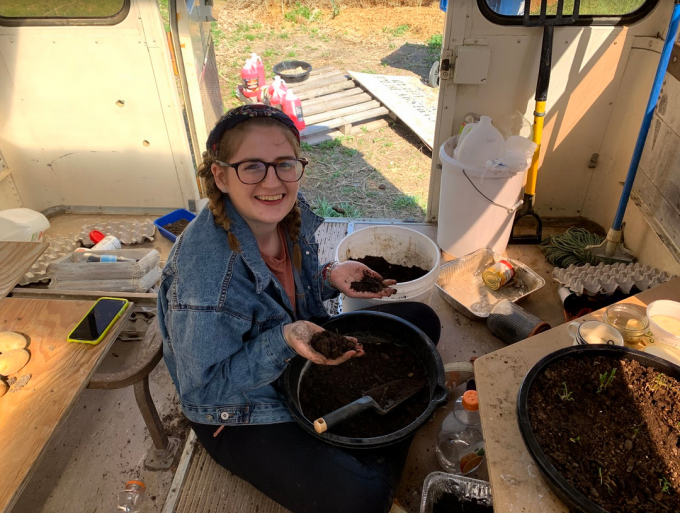
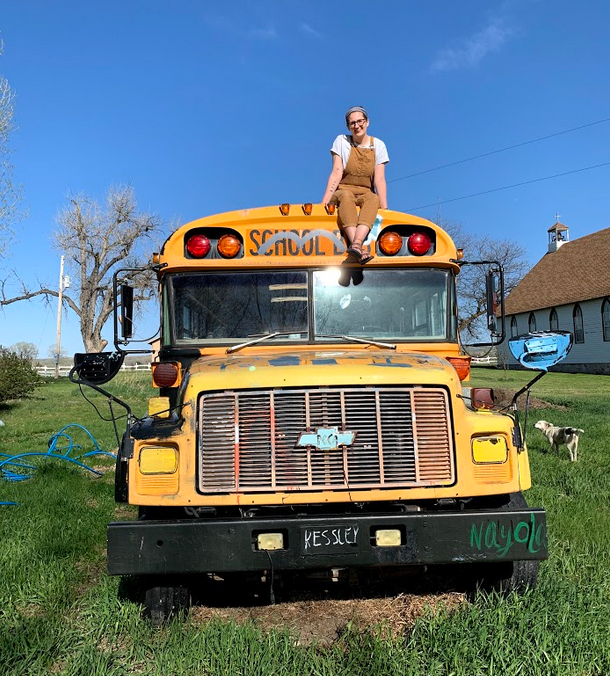
A reality and social injustice the Crow reservation faces is food insecurity. It is a food desert. The reservation, which has a population of 7,000 people, only has one grocery store. Many people have to travel to Billings, which is an hour and half drive from the reservation, to buy affordable and nutritious food. Since this pandemic started, local efforts have been made to address food insecurity. The public schools on and near the Crow reservation have provided students with free breakfast and lunch on the weekdays. Local food banks and pantries, like Helping Hands and the Center Pole, have been distributing food weekly. In March, my JV community volunteered at Helping Hands, which is directed by our support person and FJV, Elle Ross (’13-15 St. Xavier, MT).
In the light of this pandemic, I have found joy in gardening and reconnecting with nature. I hope this project will continue into next year and be used as a tool to educate students and challenge food insecurity.
Mary’s story is also highlighted on our Instagram page with additional footage.
